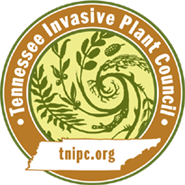Cirsium vulgare (Savi) Ten.
Cirsium vulgare (Savi) Ten.Bull Thistle, Common Thistle, Spear Thistle
| Category |
|---|
| Forb/Herb |

Description
Bull thistle is a biennial commonly found on recently disturbed sites and forest clearings, but it also invades native grasslands. Prefers full sun environments.Stem
Bull thistle’s erect spiny stems and spreading branches reach 2–5 feet.Leaves
The upper surface of the leaves is grayish-green with short, stiff hairs; the undersides are a woolly gray. The leaves are alternate, stout, and have a winged appearance, with pointed lobes and a long yellow spine at the tip.Flowers
Bull thistle produces a rosette of low-growing leaves in the first year. It bolts and flowers generally in the second year, from June to September. Flowers are terminal, 1.5–2 inches across, and rose-colored to magenta or purple. The base of the flowers is cone-shaped and densely covered with green spines.Fruit
Light brown, oblong seeds are ripe for release from July to October. Each plant produces seed only once before dying, but can produce thousands of seeds. The seeds are wind-dispersed, although research suggests that most drop within a few feet of the parent plant. Seeds germinate in spring and fall.Images
Photo: Forest & Kim Starr, U.S. Geological Survey, Bugwood.orgMore images of Cirsium vulgare
Life History
Habitat
Bull thistle can establish in grassland and scrub habitats, quickly colonizing open patches. It also reduces the value of forage lands. It thrives on moisture.Origin and Distribution
Bull thistle is native to Europe, western Asia, and North Africa, and reached the United States as a crop seed contaminant during the colonial era. It is found in all 50 states and most Canadian provinces.Synonyms
Carduus lanceolatus L.Cirsium lanceolatum (L.) Scop., non Hill
Carduus vulgaris Savi
Cirsium lanceolatum (L.) Scop. var. hypoleucum DC
h2. Management Recommendations
Mechanical Controls
Pull bull thistle by hand before the flowers open. To spare yourself the spines, step on the stem so that the thistle leans over to one side before you bend down to pull it. If the ground is hard, loosen the soil with a pick and then pull up as much of the taproot as possible. Clip any flower heads that are beyond the bud stage if population size is small. Cut the stems to at least 1–2 inches below ground with a sharp-edged shovel before the flowers bloom. Remove flower heads when feasible, i.e., in small populations. The plant may continue resprouting if the root is left in the ground, so follow-up is important. Mow after the thistles have bolted but before they flower. A second mowing one month later is usually necessary. Thistles must be cut close to the ground. Yosemite National Park has had some success using this technique.The stems can be left to decompose on-site. Any clipped flower heads should be removed (and bagged, if plants are on the cusp of developing seed), as thistle flowers can mature and produce viable seed even after being cut off the stem.
Not all bull thistles flower in the second year, so follow up for several years to catch those plants still in the rosette stage. Dig up rosettes each year or chop out 1–2 inches below ground. Replanting the area with native species will discourage bull thistle, which thrives more on open, exposed sites with little competition from other species. There is also evidence to suggest that bull thistle does not tolerate deep shade, so you might have success using a weed fabric barrier in dense patches as a follow-up treatment. Clean equipment before leaving the infested site to prevent the spread of viable seed.
Herbicidal Controls
Glyphosate: Herbicides containing glyphosate can effectively control bull thistle. Glyphosate will also kill grasses that compete with bull thistle, so treatment with glyphosate should be combined with effective re‐vegetation of the site to prevent seedlings from reinfesting the area.Selective Broadleaf Herbicides (such as triclopyr, 2,4‐D, dicamba and aminopyralid): Selective herbicides that are effective include 2,4‐D, dicamba , a combination of 2,4‐D and dicamba, or aminopyralid. Selective herbicides are preferred over non‐selective herbicides when applying in a grassy area. Selective broadleaf herbicides are effective when applied to the rosettes during periods of active growth. These periods occur in the spring, before stem elongation, and in the fall. Continue to monitor the area for new plants for at least four years after the initial treatment and following any disturbance to the soil such as tilling or construction. Triclopyr formulations can be used in accordance with labeling.
Biological Controls
The bull thistle seed head gall fly, Urophora stylata , lays eggs on closed flower buds in June and July. After hatching, the larvae burrow into the seed‐producing tissues to feed, forming galls and reducing seed production. Often, multiple larvae are needed to completely prevent seed production.The bull thistle seed head gall fly was first released in the United States in Washington State in 1983. It is now established in Oregon State and has a limited distribution in Washington State. Control of seed production is effective where the population of gall flies is high.
Biological control agents may take several years after release to have a significant impact on the infestation. Population density and the number of flowering plants can be reduced but there will always be some plants remaining when using biological control agents.
Biological control agents are not recommended or prescribed for small infestations.
Goats will eat seedlings, rosettes, and flower heads. If appropriate for site conditions, they may be used to reduce bull thistle infestations.
Bibliography
Weed Worker’s Handbook, Ch. 6 The Plants: How to Remove Bay Area Weeds, Bull thistleUSDA plant profile, "Cirsium vulgare":http://plants.usda.gov/core/profile?symbol=civu
Coombs, E.M., Clark, J.K, Piper, G.L., and A.F. Cofrancesco Jr. (editors). 2004. Biological Control of Invasive Plants in the United States. Oregon State University Press, Corvallis, Oregon.
Forcella, F. and J.M. Randall. 1994. Biology of Bull Thistle, Cirsium vulgare (Savi) Tenore. Reviews of Weed Science 6:29‐50.
Pacific Northwest Weed Management Handbook. 2006. Oregon State University, Corvallis, Oregon.
